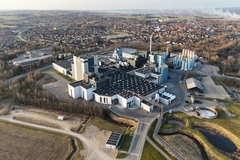
- Industry news
Industry news
- Category news
Category news
- Reports
- Key trends
- Multimedia
Multimedia
- Journal
- Events
- Suppliers
- Home
- Industry news
Industry news
- Category news
Category news
- Reports
- Key trends
- Multimedia
Multimedia
- Events
- Suppliers
EFSA: Consumer Exposure to Caramel Colors Lower Than Previously Estimated

Estimates of consumer exposure through the diet to the three caramel colors individually is considerably lower than in the previous exposure assessment and – with the exception of E 150c for toddlers and adults with high consumption levels – no longer exceed the ADIs.

20 Dec 2012 --- The European Food Safety Authority (EFSA) has revised its estimate of consumer exposure to three caramel colors (E 150a, E 150c, E 150d) used in a variety of foods and beverages. Using new data on the levels of three caramel colors (E 150a, E 150c, E 150d) as they are used in food and drinks as well as new consumption data, EFSA has concluded that consumer exposure to these colors is considerably lower than that expressed in the Authority’s 2011 scientific opinion. In most cases, the revised exposure estimate is below the Acceptable Daily Intake (ADI) established by EFSA’s experts in 2011. However, for toddlers and adults whose intake is very high, exposure may exceed the ADIs for the caramel E 150c. The main sources of exposure to E 150c are bakery wares for toddlers and alcoholic drinks for adults.
In its 2011 opinion, EFSA’s Scientific Panel on Additives and Nutrient Sources Added to Food (ANS Panel) carried out a complete re-evaluation of the safety of these three colors plus one other (E 150b) and established ADIs for their use in food. Given their similar chemical properties and uses in food, the ANS Panel also set a group ADI of 300 milligrams per kilogram of body weight per day (mg/kg bw/day) for combined exposure to all four caramel colors (with a restrictive ADI of 100 mg/kg bw/day for E 150c within the group ADI). Based on the more limited scientific information available at the time, the 2011 opinion concluded that it was possible that the use of caramel colors in foods may lead to exposures in excess of the ADIs.
In its new statement, EFSA has refined its estimate of likely exposure to caramel colors in food based on new data provided by industry in 2012 on use levels in products ready to be consumed and consumption data available in the EFSA Comprehensive European Food Consumption Database. Estimates of consumer exposure through the diet to the three caramel colors individually is considerably lower than in the previous exposure assessment and – with the exception of E 150c for toddlers and adults with high consumption levels – no longer exceed the ADIs. The combined exposure estimates of the four caramel colors do not exceed the group ADI of 300 mg/kg bw/day for any population group.
This latest work reviewing consumer exposure to caramel colors used in foods and beverages complements EFSA’s previous risk assessment on these colors carried out in the context of the Authority’s on-going re-evaluation of all food colors currently authorised in the EU. EFSA’s scientific advice will help to inform decisions of EU policy makers in relation to food colors.
Caramel colors are added to food to give a deeper shade of brown and are widely used in a variety of foods including non-alcoholic flavoured drinks, confectionary, soups, seasonings and alcoholic drinks such as beer, cider and whisky.
Caramel colors are complex mixtures of compounds produced by carefully controlled heat treatment of carbohydrates (sugars). They are classified into four categories depending on the reagent used in their manufacture (ammonia and/or sulphite or no reagent), and generally known by the E numbers E150a, E150b, E150c, and E150b.










